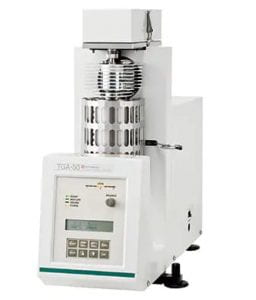
Shimadzu TGA-50
Thermogravimetric analyzers measure changes in mass or weight in response to increases in temperature or time. These kinds of measurements can give valuable information about a material’s thermal stability, response to oxidation, composition, decomposition kinetics, moisture content, and more.
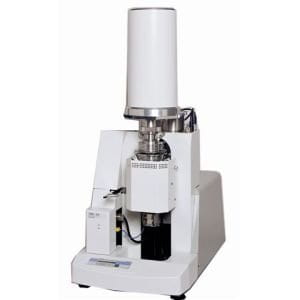
Shimadzu TMA-60
Thermomechanical analyzers (TMA analyzers) are used to study stress generated by a material subjected to a controlled increase in temperature. Types of stress generated can include expansion, compression, tension, or degree of bending. These analyzers are useful for mechanical analysis of materials including glass, polymers, metals, and ceramics.
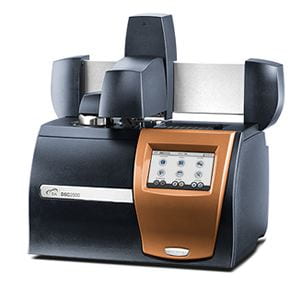
TA Discover DSC 2500
Differential scanning calorimetry analysis provides insight into critical physical properties of materials by testing their response to heat. The heating of both a sample and reference material provides a validated relative temperature response and heat capacity. These furnace-based systems are perfect for studying unique phase-change properties, such as with liquid crystals, determining quantitative enthalpy of materials, or testing the elasticity of products exposed to extreme temperatures and/or pressures.

Thermo-Fisher ARL Equinox 100 XRD
X-Ray Diffraction (XRD) allows one to ascertain the molecular structure of a crystalline material by diffracting x-rays through the sample. An XRD analyzer obtains interference patterns reflecting lattice structures by varying the angle of incidence of the X-Ray beam. Benchtop XRD can be targeted for single crystal diffraction for imaging lattices; powder diffraction for phase determination; identifying unfamiliar substances for use in inspection, crystallography, and pharmaceutical research correlating crystal structures with drug efficacy.
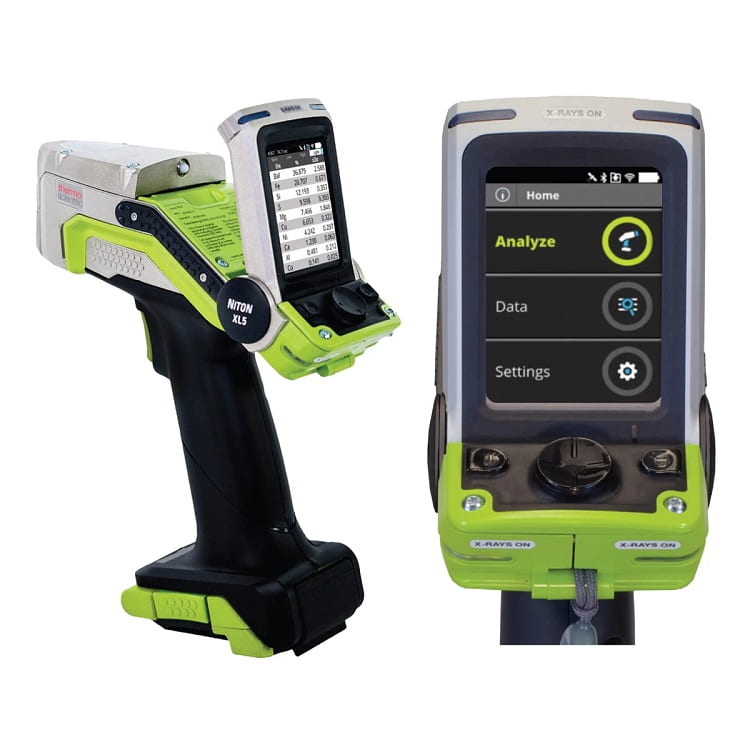
Thermo Scientific Niton XL5 XRF
X-ray fluorescence spectrometers use high energy X-rays (or gamma rays) to excite fluorescent radiation from a sample for quantitative chemical or elemental analysis and have many industrial and research applications. Elements with an excitation energy less than the x-ray beam fluoresce and can be counted by a wavelength-dispersive or energy-dispersive spectrometer. The advantages of x-ray fluorescence spectrometers are that there is no need for sample prep (the material can simply be placed in the beam), and that it is a non-destructive analysis technique.
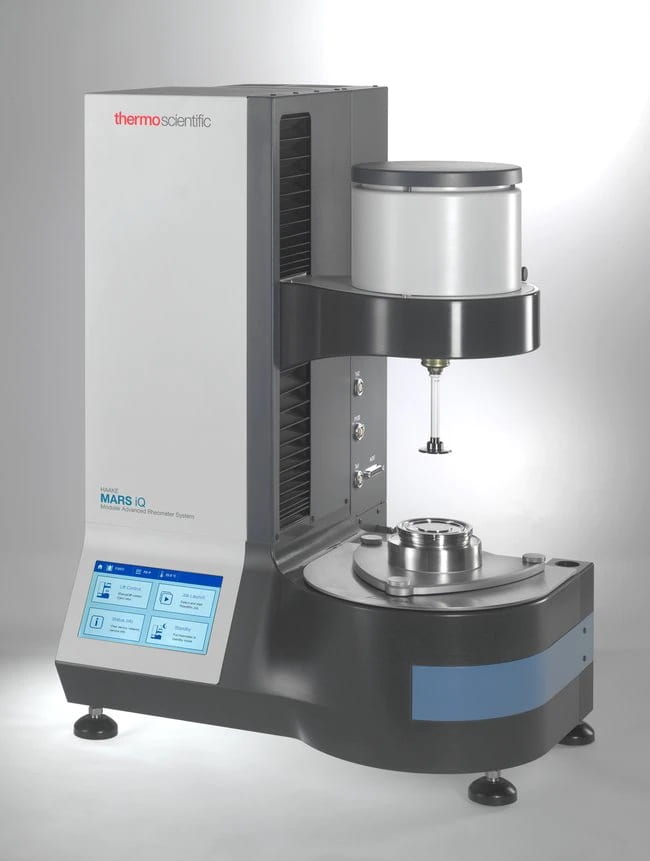
Thermo Scientific Haake Mars iQ Rheometer
A rotational rheometer, also known as a shear rheometer, is an instrument used to determine how a liquid or slurry flows. Rotational rheometers can measure viscosity, thixotropy, shear stress, and shear strain. Used in the plastics, petroleum, cosmetic, food, and pharmaceutical industries. Rotational rheometers help to maintain parameters such as consistency and fluidity, which in turn allow predictions to be made about stability, texture, and shelf life. Rotational rheometers apply a known force to the sample and measure how it reacts to the force and the force the sample then exerts on the rheometer.
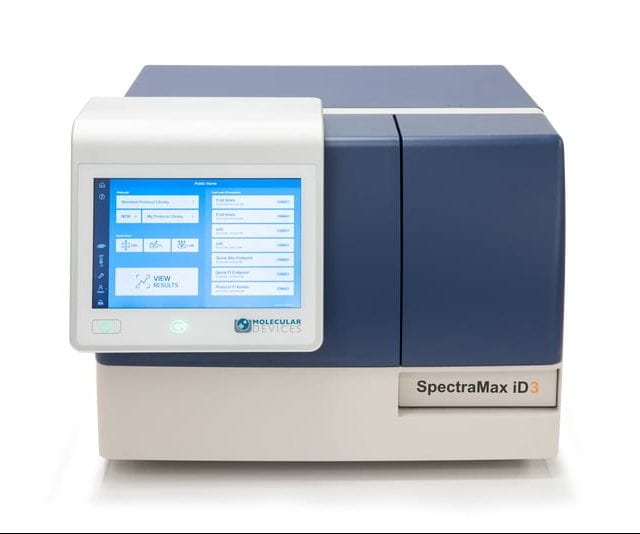
Molecular Devices SpectraMax iD3 Multi-Mode Microplate Reader
Like conventional microplate readers, multimode microplate readers detect reaction signals from microtiter plates in order to perform assays such as ELISA, protein detection, and drug screening assays. Unlike conventional plate readers, multimode microplate readers are able to perform two or more forms of detection allowing a single piece of equipment to perform a wider range of assays.
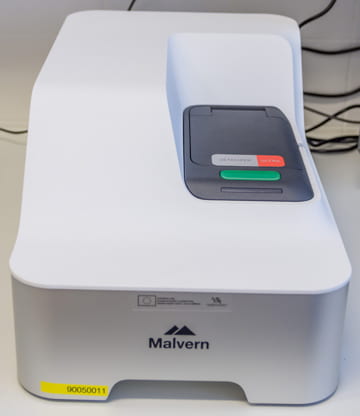
Malvern Panalytical Zetasizer Advance Ultra
Particle analyzers are used to determine the size and distribution of particles making up a material. Particle size analyzers are used in numerous fields for research and development, manufacturing and for quality control and product testing. Dynamic light scattering particle analyzers are mainly used for analyzing particles in solution (size range: 1 nm to 6 μm). Dynamic light scattering determines size from the fluctuations in scattered laser light intensity created by the particles’ Brownian motion.

Thermo Scientific NanoDrop 2000
Spectrophotometers are used to measure the concentration of a known substance in a solution. They do this by passing a light through the substance and measuring light intensity as a function of wavelength.
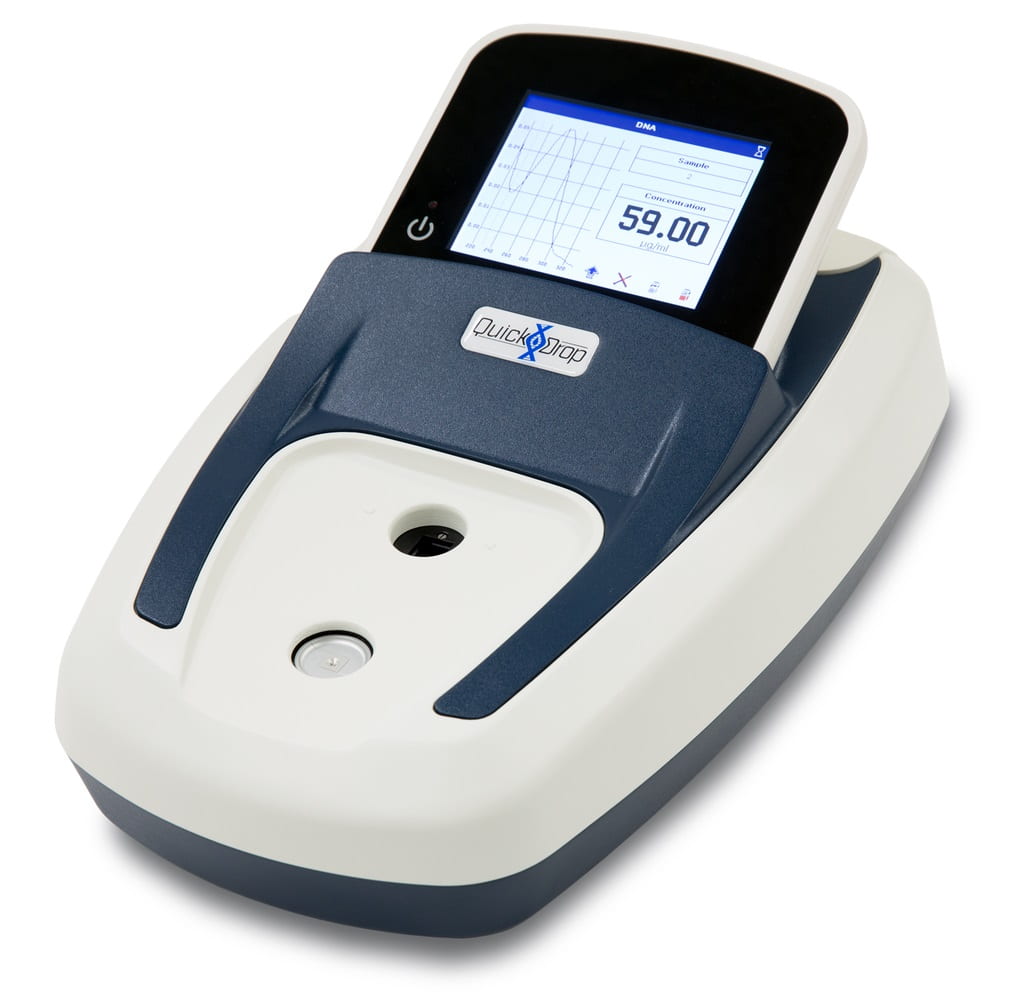
Molecular Devices SpectraMax QuickDrop
Spectrophotometers are used to measure the concentration of a known substance in a solution. They do this by passing a light through the substance and measuring light intensity as a function of wavelength.
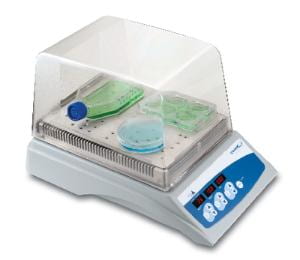
Thermo-Fisher ARL Equinox 100 XRD
Laboratory Platform Shakers are used in a variety of labs to agitate and mix samples and solutions in tubes, plates, and flasks. Depending on the type of applications, the shaker platform, shape, and even texture can vary, as well as the shaking motion itself.

VWR Analytical Balance
Analytical balances offer a range of weighing capacities (tens to hundreds of grams), with a readability down to 0.1 or 0.01 mg.

Mettler Toledo WXTS3DU Microbalance
A microbalance is an instrument capable of making precise measurements of weight of objects of relatively small mass: of the order of a million parts of a gram. In comparison, a standard analytical balance is 100 times less sensitive; i.e. it is limited in precision to 0.1 milligrams.

Hitachi TM4000 Plus Tabletop SEM
Scanning electron microscopes (SEMs)—instruments for observing the fine structure of sample surfaces—are widely used in all fields of industry, particularly in biotechnology and material sciences. The TM4000 series of tabletop microscopes is a low-vacuum SEM with a thermal electron gun that retains the key strengths of their predecessors in the TM3000 series while boasting smaller instrument footprints and improved ease of use, making SEM observations easy even for users who have never before worked with an electron microscope. New features include (a) SEM-MAP capability, in which images captured by a camera mounted inside an evacuated sample chamber are used for sample navigation, allowing users to move to desired observation regions with just a single click of the mouse, and (b) report-preparation software (a standard feature available on all instruments in the series ) allowing users to generate reports of observed images following an observation session. Moreover, all the TM4000 series are equipped with a semiconductor backscattered-electron detector as a standard feature, while the TM4000 PLUS model further boasts a high-sensitivity low-vacuum secondary-electron detector (UVD). The TM4000 series expands the universe of tabletop microscopy, empowering more users than ever before to unleash the creativity of their innovations.

Denton Vacuum Desk IV
The Denton Vacuum Desk IV Cold Sputter/Etch Unit is designed to quickly deposit a conductive coating on SEM samples with consistent deposition parameters. The system also provides some limited surface cleaning. The sputter cathode is clamped to an insulated aluminum plate in the chamber cover. We use a high-purity Au target for sputtering. Other targets are available but need to be purchased by the user. A manual gas control is provided to control pressure from the UHP Ar gas cylinder. A touch screen is used to control the system and monitor process parameters.